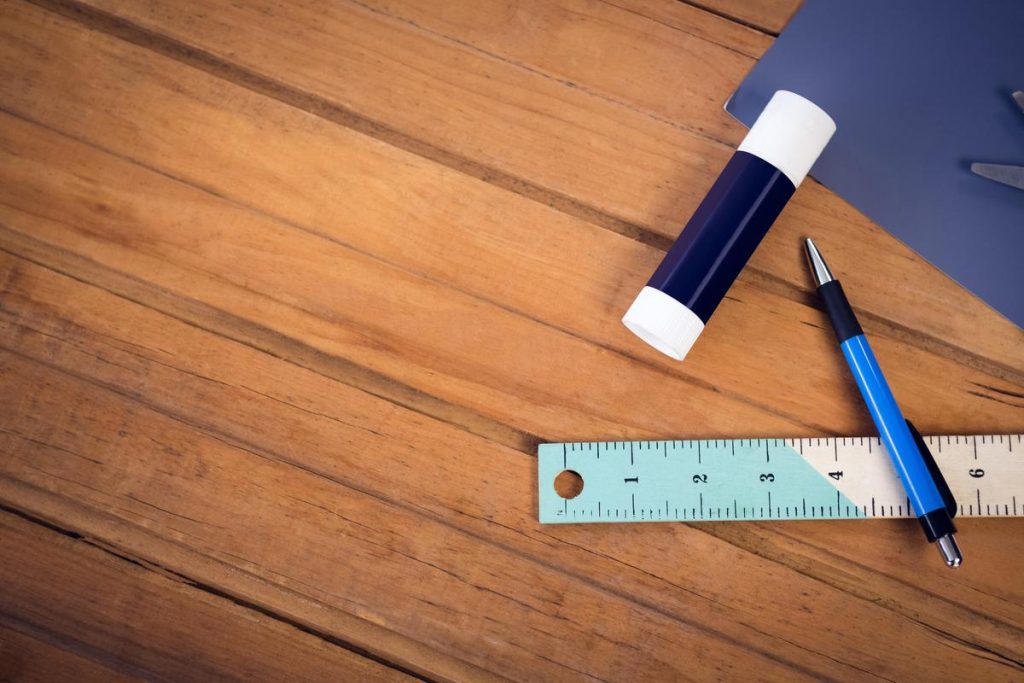Have you ever been in a situation where you needed to glue something together, and you were unsure whether a glue stick was big enough for the job? It’s a common dilemma that many of us have faced at some point in our lives. But have you ever stopped to wonder just how big a glue stick really is? The answer may surprise you.
The size of a glue stick can vary depending on the brand and type, but on average they are around 4 inches long and have a diameter of half an inch to an inch. Some larger glue sticks can be up to 6 inches long.
In this article, we will explore the different sizes of glue sticks available and what you need to know to choose the right one for your next project.
How Big is a Glue Stick?
Glue sticks are commonly available in several sizes, including mini, small, regular, and jumbo. The exact sizes may vary slightly depending on the manufacturer, but here are some general guidelines:
Small glue sticks:
Small glue sticks are typically compact and handy for small-scale projects or tasks that require precise application. They are commonly used for lightweight materials and delicate crafts. The dimensions of a small glue stick can vary, but they are generally around 2 inches to 3 inches in length with a diameter of about 0.4 to 0.5 inches.
Medium glue sticks:
Medium glue sticks offer a balance between size and adhesive capacity. They are suitable for various projects, including school assignments, crafts, and general household use. The dimensions of a medium glue stick can range from approximately 4 inches to 5 inches in length with a diameter of around 0.6 to 0.7 inches.
Related: Things That Are 5 Inches Long
Large glue sticks:
Large glue sticks are designed to hold a greater amount of adhesive, making them suitable for larger projects or tasks that require more bonding material. They are commonly used for heavier materials, such as wood, and for more substantial craft projects. The dimensions of a large glue stick can vary, but they are generally around 5 to 6 inches in length with a diameter of about 0.8 to 0.9 inches.
Jumbo glue sticks:
Jumbo glue sticks are the largest size category and are intended for heavy-duty applications or projects that require a significant amount of adhesive. They often come in oversized tubes with a higher adhesive capacity, making them ideal for industrial use or large-scale crafting. The dimensions of a jumbo glue stick can vary, but they are typically around 7 inches to 8 inches in length with a diameter of about 1 inch or more.
How to Measure a Glue Stick?

Measuring the Length of a Glue Stick:
- Lay the glue stick down on a flat surface, such as a desk or table.
- Use a ruler or measuring tape to measure the length of the glue stick from end to end.
- Place the zero end of the measuring tool at one end of the glue stick and read the measurement on the tool at the other end of the glue stick.
- Note the measurement in either inches or centimeters, depending on the market units of the tool you used.
Tip: To measure the length of a glue stick accurately, make sure that the glue stick is lying flat on a level surface and measure it from end to end without compressing it.
Measuring the Diameter of a Glue Stick:
- Use calipers or a ruler to measure the diameter of the glue stick.
- Hold one end of the caliper or ruler on the side of the glue stick.
- Slide the caliper jaws or ruler along the diameter of the glue stick until you reach the other side of the glue stick.
- Note the measurement on the caliper or ruler and record it in either inches or millimeters.
Tip: To get a precise diameter measurement of the glue stick, use calipers instead of a ruler and measure in millimeters rather than inches.
Is Glue Stick Size Important?

Yes, the glue stick size can matter depending on the project you are working on.
Using a glue stick that is too small for the job may not provide enough adhesive to hold the materials together properly, resulting in a weak bond. On the other hand, using a glue stick that is too large can lead to excess glue application, which can be messy and difficult to clean up.
It’s essential to choose the appropriate glue stick size based on the size and nature of the project you are working on. Mini glue sticks are suitable for small projects, while larger glue sticks may be needed for bigger projects. It’s always a good idea to read the label on the glue stick to determine the appropriate size for your project or consult the manufacturer’s website for recommendations.
Related: Standard Card Envelope Sizes And Dimensions
Why Do We Use Glue Sticks?

Glue sticks are commonly used in crafting, school projects, home repairs, packaging and shipping, and DIY projects. They are versatile adhesives that can bond lightweight materials like paper, cardboard, and foam, as well as wood, plastic, and fabric.
Is Glue Stick Non-Toxic?
Most glue sticks are considered non-toxic, but it’s always a good idea to check the label or product information to confirm.
In general, glue sticks are made from non-toxic and water-soluble ingredients, such as polyvinyl alcohol and starch. These ingredients are safe for use by children and adults and are not known to cause harm if accidentally ingested in small amounts.
Related: How Big Is A Sticky Note?
FAQs
How long is a full-size glue stick?
The length of a full-size glue stick can vary by brand, but on average it is around 4 inches.
How long is a glue stick in inches?
A glue stick is typically measured in length by inches, with a full-size glue stick being around 4 inches in length.
How many ml is a glue stick?
The measurement of a glue stick is typically done in grams instead of milliliters. However, a standard glue stick is usually around 20-25 grams.
What size glue stick is large?
The size of a large glue stick can vary by brand, but it typically refers to a size larger than the standard or mini glue stick. A large glue stick can be around 5-6 inches in length and have a greater quantity of glue inside.